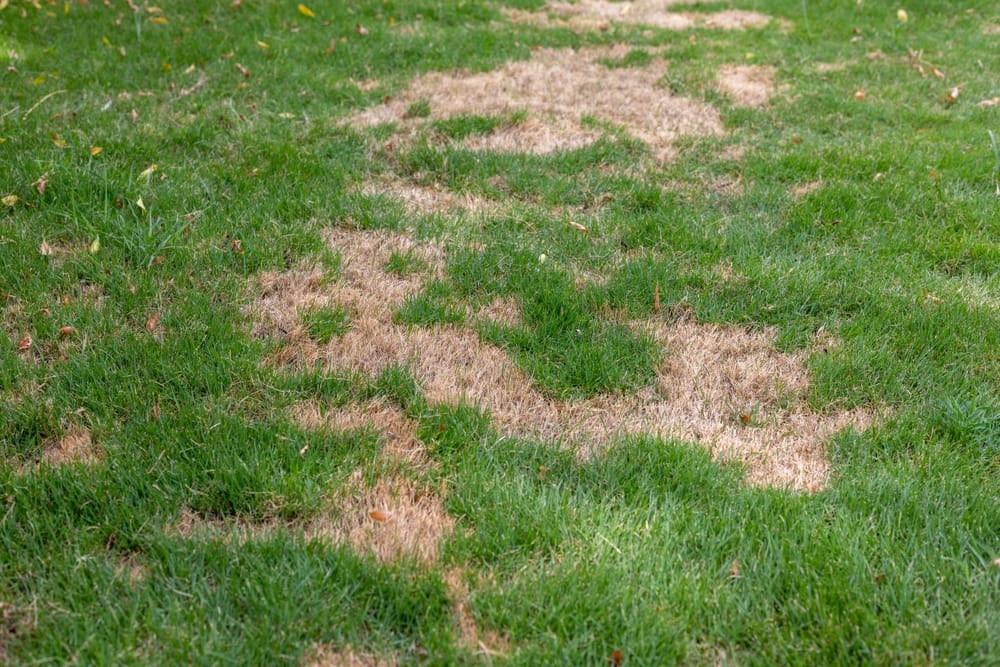
If you’ve noticed distressed, patchy areas on your lawn, you might be dealing with a chinch bug infestation. Preventing chinch bugs in your lawn is a constant challenge for North Texas homeowners during the hot, dry months when these pests are most active. Fortunately, by monitoring your lawn for signs of a problem, you can stop these pests before it’s too late. Here are the key facts about chinch bugs, and what you can do to prevent lawn damage.
How Chinch Bugs Damage St. Augustine Grass
St. Augustine grass is popular among homeowners thanks to its lush, dark green appearance. However, this type of lawn is particularly susceptible to chinch bugs, primarily when grown in full sun conditions.
Unfortunately, chinch bugs can cause significant damage to St. Augustine grass, feeding on the grass and injecting a toxic substance that can quickly kill the plants. This can result in large brown dead patches in your lawn, and the affected area will continue to grow as the bugs keep on spreading.
How Chinch Bugs Can Damage Your North Texas Lawn
If you have St. Augustine grass, you might already know about the potential threat from chinch bugs. These tiny pests are known to cause significant damage to lawns, and their impact can often be mistaken for other problems. For example, a chinch bug infestation can cause the grass to appear brown and dead, making homeowners think they are dealing with drought conditions or another issue.
In practice, these little chinch bugs feed on the grass and inject a toxin that causes the plants to die. The small size of chinch bugs (about 1/5 of an inch long) can make them difficult to spot, but the damage they cause is easy to see. The dead patch can quickly spread and engulf a larger lawn area as the infestation grows. To make matters worse, chinch bugs are attracted to sunny areas, so non-shaded parts of your St. Augustine lawn can be even more susceptible to damage.
While changing the type of turf is an option to avoid chinch bugs, that’s not going to be a realistic choice for many homeowners, especially those with shade in their yards. So, it’s essential to be vigilant and take steps to prevent or manage a chinch bug infestation. Proper lawn maintenance, including fertilization and thatch removal, can help keep chinch bugs and other pests away from your lawn.
While professional treatment can control an infestation of chinch bugs and restore your lawn to a strong, healthy condition, it’s always best to use a preventive approach. Lawn treatment companies prevent lawn pests by encouraging thick, resilient grass that has the right levels of fertilization and is free from thatch buildup.
How to Detect Chinch Bugs in Your Lawn
The classic “tin can method” is a simple, effective way to determine if you have a chinch bug infestation in your lawn. To use this method:
- Get a tin can and cut off both ends.
- Push one end of the can into the middle of a dying patch in your lawn.
- Fill the can with water and keep it filled for about 10 minutes.
- Observe the surface of the water in the can. If chinch bugs float to the surface, it indicates that they are the source of your lawn problem.
If you’re unsure about the status of your lawn or would like to take preventive measures, consider contacting a professional lawn care service. Lawn specialists will identify chinch bugs in your lawn and develop a treatment program to manage the infestation. Proper lawn maintenance such as practicing the best thatch control, mowing techniques, and appropriate fertilization can help keep chinch bugs and other pests away from your lawn.
Preventing Chinch Bugs Through Proper Lawn Maintenance
Proper lawn maintenance is one of the best ways to protect your turf from chinch bugs. Our team provides this service for homeowners across North Texas. Green Top Lawn Care can help your lawn thrive and keep chinch bugs and other pests away. We’ll also put your lawn on an appropriate fertilization schedule, reducing the likelihood of chinch bugs in your turf. Call us at (817) 684-4044, or request a free turf insect control quote.







